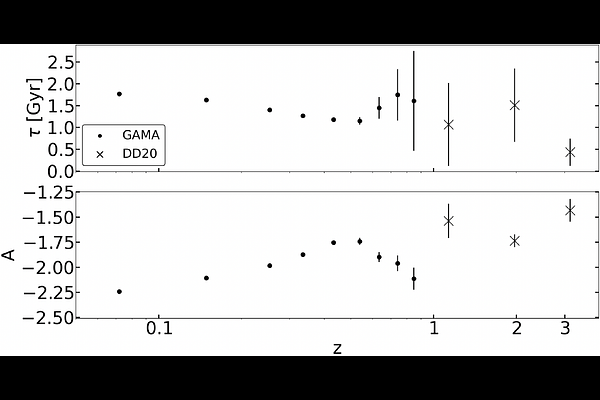Dust removal timescale in galaxies across cosmic time

Dust removal timescale in galaxies across cosmic time
Aleksandra Leśniewska, Jens Hjorth, Christa Gall
AbstractUnderstanding the evolution of dust in galaxies is crucial because it affects the dynamics and cooling of gas, star formation, and chemical evolution. Recent work on dust removal in galaxies indicates timescales of gigayears, with old stellar populations and AGNs as the primary drivers of this process. However, most statistically significant studies are focused on low redshifts $z < 0.4$. Here, we determine the dust removal timescale in galaxies over a wide range of redshifts, up to $z \sim 5$. We use publicly available catalogue data of infrared-selected galaxies, observed by \textit{Herschel}. Using the inferred dust masses, stellar masses, and stellar ages, we calculate the dust removal timescale in a sample of more than 120,000 galaxies. We find that, with increasing redshift, the dust removal timescale decreases from 1.8 Gyr at redshift $z \sim 0.05$ to less than 500\,Myr at $z > 3$. Galaxies at higher redshifts undergo more efficient dust removal than galaxies at lower redshift, likely driven by AGN activity, supernova shocks, and astration. These findings indicate that dust removal evolves over cosmic time, reflecting the changing mechanisms regulating dust content of galaxies as the Universe evolves.